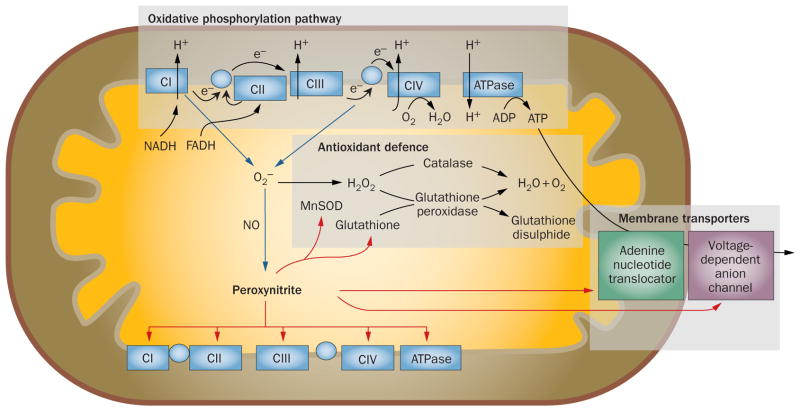Figure 3.
Contribution of nitro-oxidative stress to mitochondrial dysfunction. During mitochondrial respiration, the oxidative phosphorylation pathway produces the proton gradient required for ATP production. Electrons leaking from the electron transport chain react with molecular oxygen to produce potentially damaging O2−, which has the potential to generate other reactive oxygen species and—via interaction with NO—peroxynitrite. Under normal conditions, the antioxidant defence system (including MnSOD, catalase, glutathione and glutathione peroxidase) adequately reduces superoxide to water and molecular oxygen;81 however, if these mechanisms are overwhelmed, formation of peroxynitrite increases.89 In turn, peroxynitrite induces a bioenergetic deficit by disrupting the activities of metabolic enzymes, mitochondrial electron transport chain proteins, ATP synthase, and membrane transport proteins.80,81 Notably peroxynitrite-induced damage to MnSOD creates a feed-forward mechanism for enhancing its own production, thus facilitating the hazardous accumulation of superoxide.80,81 Blue lines indicate pathways for the formation of reactive oxygen and reactive nitrogen species, red lines indicate potential targets of peroxynitrite-induced mitochondrial dysfunction. Abbreviations: C, complex; MnSOD, manganese superoxide dismutase; NO, nitric oxide; O2−, superoxide ion.

